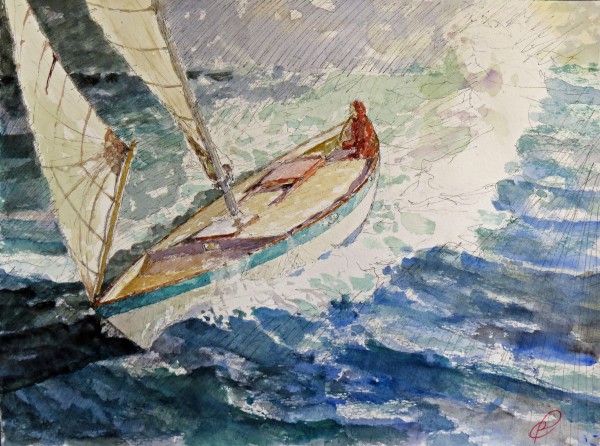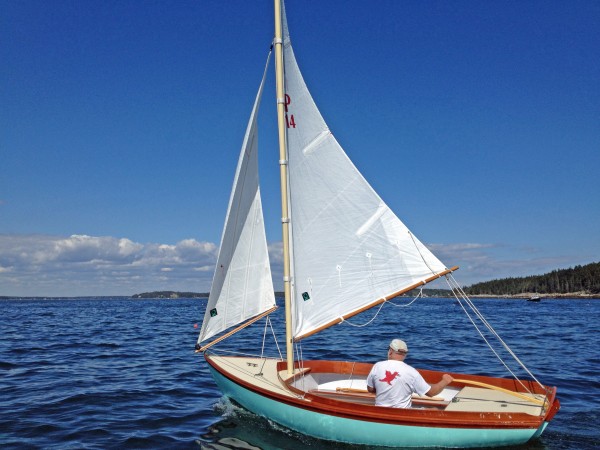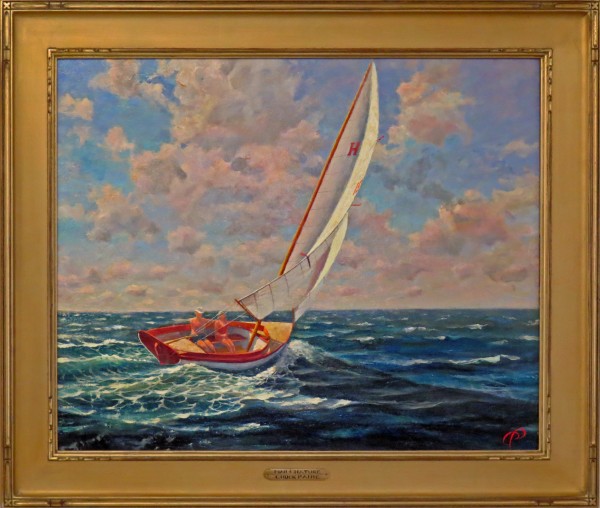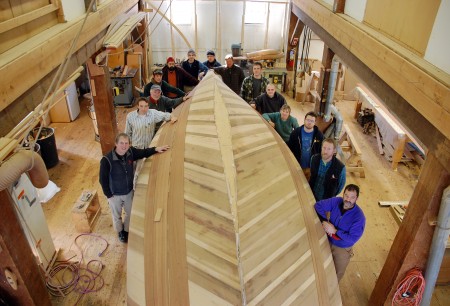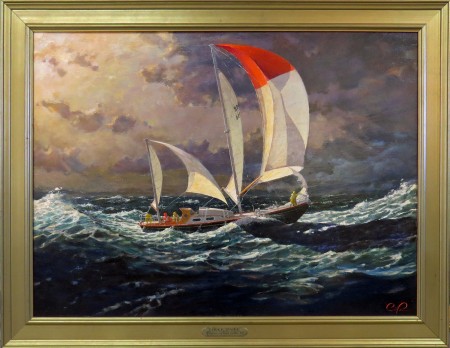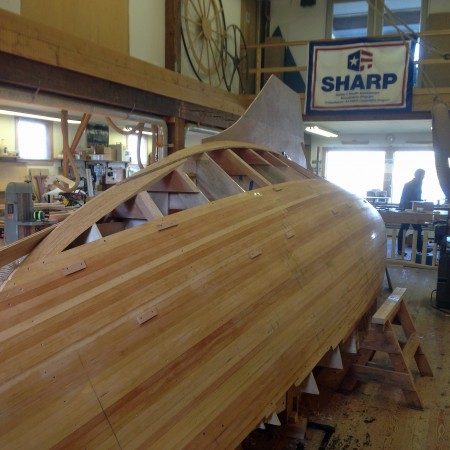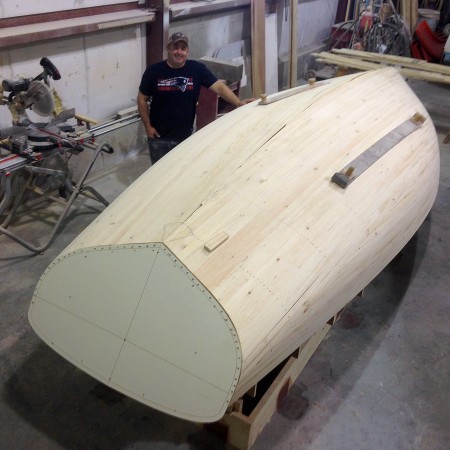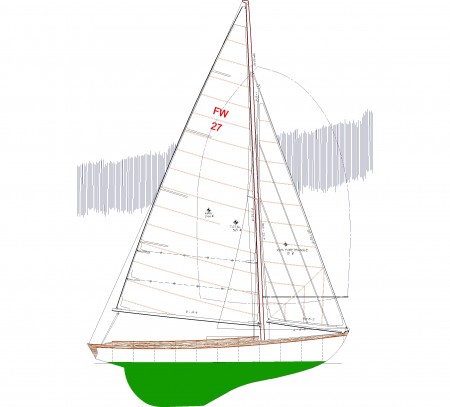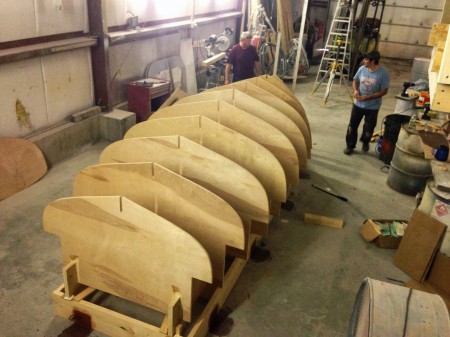MIND THE GAP!
The Paine 14 design has a balanced rudder, making it exquisite to helm. This means that some of the rudder blade area is forward of the pivot axis. This is great for the helm balance, but since the aft end of the boat has deadrise, as soon as the rudder is swung off-center, a gap opens up between the rudder and the hull. It’s like a forward facing pair of scissors.
One week this past summer I took my friend Dennis sailing. It was blowing pretty hard, and just as I cast off the mooring a gust caught us on the wrong tack, forcing us to sail over the dinghy painter which was tied to the mooring float. Needless to say, in she went, and almost immediately we were tethered stern to wind, and a lot of it. The forces involved are huge. There was no choice but to wrestle the mainsail down- no small feat- and roll up the jib to remove the pressure. Then fish around underwater with the boom crutch to finally release the jammed rope, near the point of exhaustion. Not exactly a day of elegant relaxation on the water.
Then just to drive the point home we sailed over a lobster pot line an hour later and did the same thing all over again!
I was determined that this would never happen again. I considered the other ways that have been used to mitigate the problem: A windsurfer fin installed just forward of the rudder, or pieces of shock cord that stretch across the open maw- but neither is entirely proof against a jam for as we all know on a sailboat, if anything possibly can go wrong, it will! So I have invented an absolutely jam-proof solution to the problem. Since many other designs have the combination of a balanced rudder and veed hull, I offer my solution for your benefit. It will be fitted to all Paine 14s and York 18s and any similar yachts I might design in the future.
What I did was to swing the rudder off-center to its maximum possible turning angle. Then I extended the top of the rudder up until it just cleared the hull at this angle. Of course then when you articulate the rudder toward the centerline there is a hull in the way. This I carved away into a section of the surface of a cone, such that the top of the rudder just “sweeps” the concave cone with a paper-width of clearance- far too little for anything to force its way into the gap.
It works great. The amount of turbulence created by the little discontinuity is trivial. And no more embarrassing and potentially dangerous rudder jams! The new YORK 18, debuting next Spring, will have the same feature.
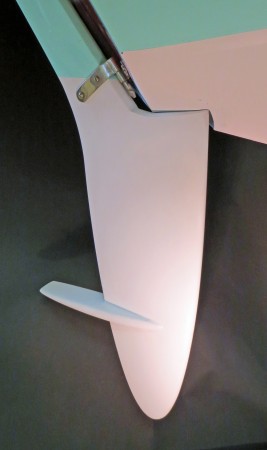
A balanced rudder that cannot foul. It’s swung over hard to port. The top of the rudder sweeps the hull with no space for anything to jam into.
